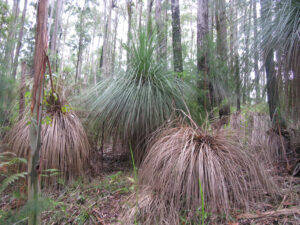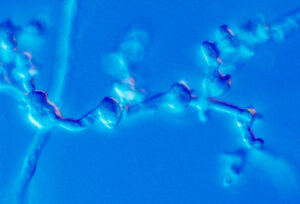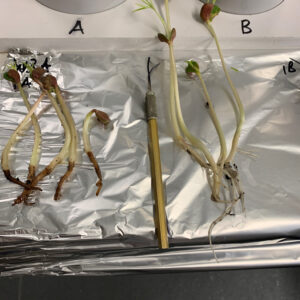
Preventing plant pandemics
By Dr Brett Summerell
Plants, like us, are constantly challenged by a rapidly evolving array of disease-causing organisms that are spread around the world with increasing speed and frequency. Newly arrived pathogens can have devastating impacts on naïve plant species and can even dictate what plants can be grown, where plants can be grown and even if visitors can be allowed into an area. The implications for all horticulturists are enormous!
When I first started as a plant pathologist at the Gardens over thirty years ago, I had a responsibility to diagnose diseases in the collections at the three gardens in Sydney, Mount Annan and Mount Tomah. At that time, the techniques available to me were relatively primitive and rudimentary. We could look at the symptoms expressed by the plants, try to isolate pathogenic organisms, which may in some cases take weeks, and make decisions based on a combination of experience, instinct and the relatively limited scientific evidence available at the time.
The situation has changed dramatically, and at the PlantClinic* we have a range of techniques that can be used to detect the presence of pathogens accurately and precisely, and in a remarkably short period of time. If you had said to me 18 months ago that the media and the broader community were speaking more regularly about quarantine, PCR testing, genomics and mutations in pathogens, I would have looked at you in disbelief. Of course, as a result of the COVID-19 pandemic, many of us are now much more familiar with these terms and the importance of pathogen management.

Many of the tools and techniques used to detect and manage COVID-19 are directly related to plant disease, and in fact the PlantClinic uses the same rtPCR chemistry for detection of the soil borne plant pathogen Phytophthora. The PlantClinic has now moved to using DNA based techniques for almost all the disease diagnostics we do (https://pddu.formstack.com/forms/pddu). With these techniques we provide a service that is much more rapid, more accurate and able to detect pathogens at lower levels, and with more precision.
Two of the most important soilborne diseases, particularly of trees and shrubs, are Phytophthora root rot and Armillaria root rot. Both are devastating diseases in which all the activity happens underground in the roots of the plant. Consequently, the diseases are difficult to detect, especially as the symptoms can be confused with drought or nutrient deficiencies. We now have techniques to extract Phytophthora, a microscopic fungal-like pathogen (technically an Oomycete), from soil using baits, and then to extract Phytophthora DNA directly from these infested baits, so that we can detect its presence and identify exactly what species it is. For Armillaria we were only able to accurately identify its presence when it produces mushrooms, which only occurs once a year in May or June! Now all we need is a piece of infected wood or bark from which we can extract DNA and then sequence to get a match to the species of Armillaria. This can happen at any time of the year and only takes a fraction of the time.

Early detection of these types of diseases are critical. We are currently embarking on a major project called “Stop the Rot!”, working with different agencies to ensure that the large numbers of trees, and other plant species, that are being used for urban greening and restoration programs are pathogen free when they go into the ground. Globally, contamination of plants with pathogens is a major hindrance to restoration programs and a cause of tree mortality and failure. What is even worse, is that importing diseases into an area means it will remain contaminated even if the plant dies and is removed, with the end result being that replacement plantings, even if disease free, have a high chance of being infected, performing poorly and even dying. Our aim is to highlight the importance of disease-free plants to ensure the best possible future for these types of planting projects.

As we are learning with the pandemic, prevention is better than cure. Relatively simple measures can be implemented in nurseries to enhance hygiene and prevent infection. Masking symptoms with chemicals like potassium phosphonate only delays having to manage the disease, and passes the issue on to land managers, usually with poor outcomes. By producing disease free plants, it will be possible to create sustainable urban green spaces.
*https://www.rbgsyd.nsw.gov.au/Science/PlantClinic
Dr Brett Summerell – Chief Botanist
PlantClinic, Australian Institute of Botanical Science
Royal Botanic Gardens and Domain Trust, Sydney
All images are supplied by Royal Botanic Gardens and Domain Trust, Sydney
